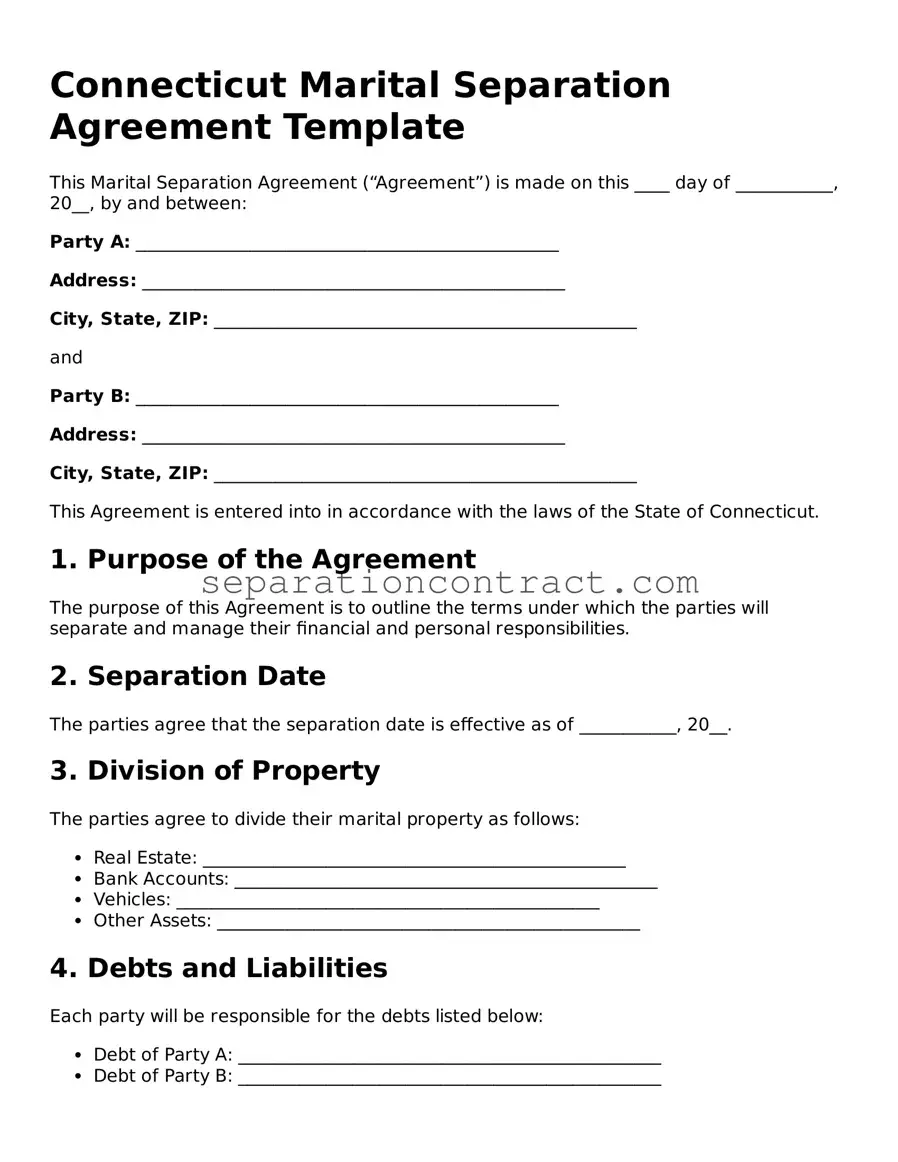Filling out the Connecticut Marital Separation Agreement form can be a daunting task. Many people make common mistakes that can lead to delays or complications in the separation process. Understanding these pitfalls can help ensure a smoother experience.
One frequent mistake is not providing complete information. When filling out the form, it’s crucial to include all necessary details about both parties, such as full names, addresses, and dates of birth. Omitting any of this information can result in the form being rejected or requiring resubmission.
Another common error is failing to specify the terms of asset division clearly. It’s important to outline how property and debts will be divided. Vague language can lead to misunderstandings and disputes later on. Clearly stating who gets what helps both parties understand their rights and responsibilities.
People often overlook the importance of including a parenting plan when children are involved. This plan should detail custody arrangements, visitation schedules, and child support obligations. Neglecting to address these issues can create confusion and lead to conflicts down the line.
Inaccurate financial disclosures are also a significant issue. Individuals must provide truthful and complete financial information, including income, expenses, and assets. Misrepresentation, whether intentional or accidental, can have serious legal consequences.
Another mistake is not considering tax implications. Many people forget that separation can affect tax filings. It’s wise to consult with a tax professional to understand how the separation agreement may influence tax liabilities for both parties.
Some individuals fail to have the agreement reviewed by an attorney. While it’s possible to fill out the form independently, having a legal expert review the agreement can help identify potential issues and ensure that all necessary provisions are included.
Additionally, not signing the agreement in front of a notary can lead to problems. A notarized signature adds an extra layer of authenticity and can help prevent disputes about the validity of the agreement later on.
People sometimes forget to keep copies of the completed form. It’s essential to retain a copy for personal records and to provide one to the other party. This ensures that both individuals have access to the same information and can refer back to it as needed.
Finally, one of the most significant mistakes is not following up on the agreement once it’s filed. After submitting the form, individuals should ensure that all terms are being adhered to. Regular communication can help prevent misunderstandings and maintain a cooperative relationship.
